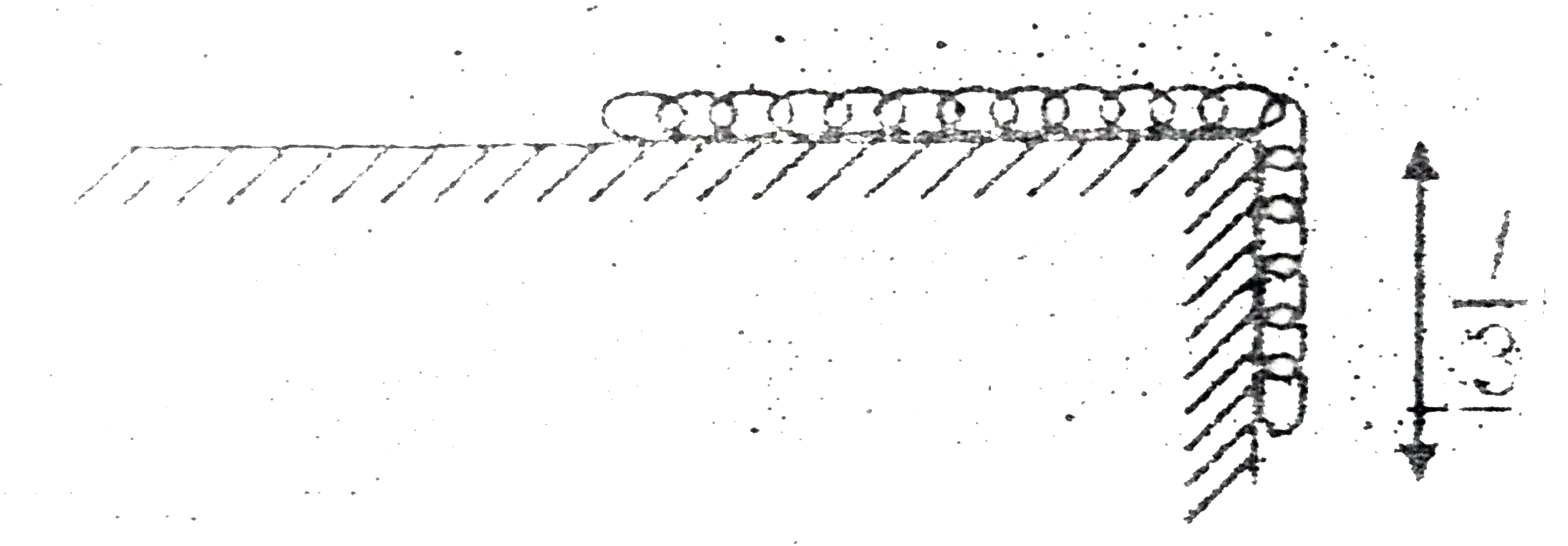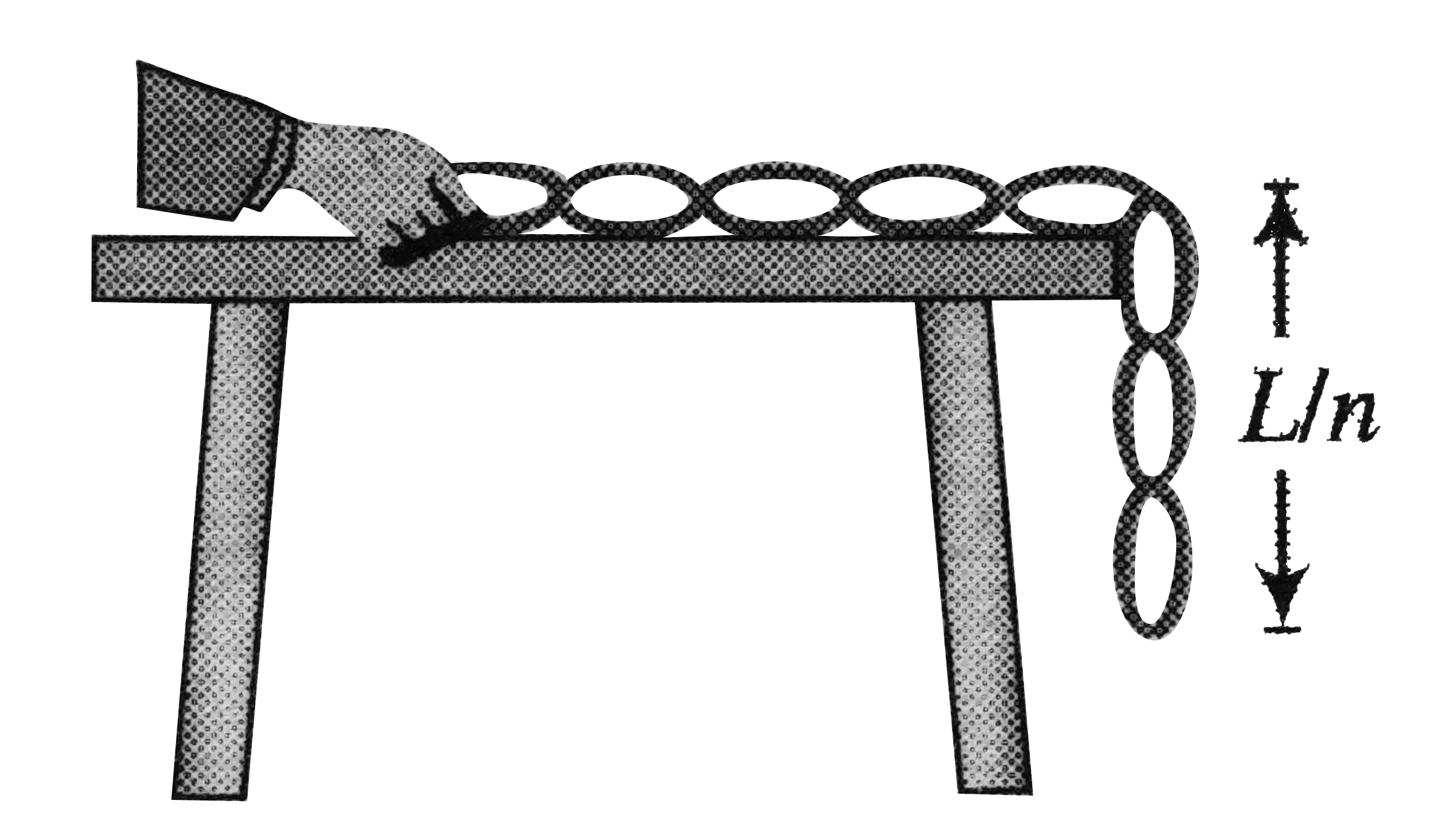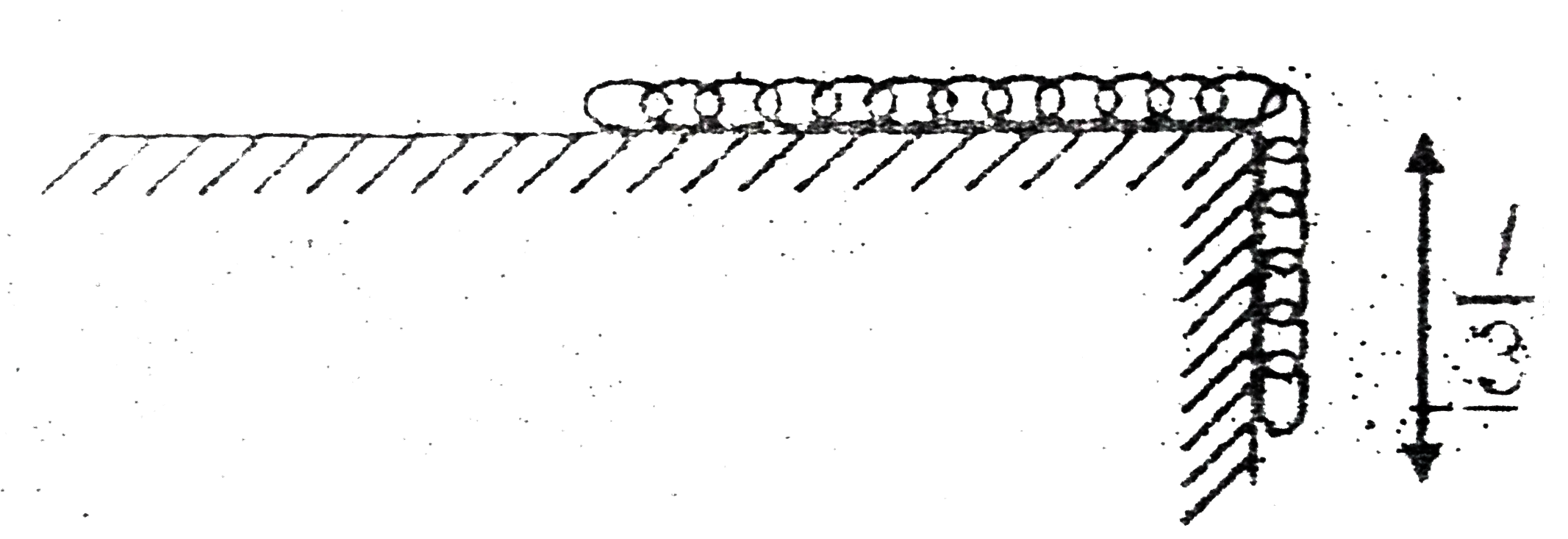A uniform chain has a mass M and length L. It is placed on a frictionless table with length l0 hanging over the edge. The chain begins to slide down. Ten, the speed v with which the end slides down from the edge is given by
v=√gL(L+l0)
v=√gL(L−l0)
v=√gL(L2−l20)
v=√2g(L-l_(0)))
The correct Answer is:C
To solve the problem of the uniform chain sliding off a frictionless table, we can follow these steps:
Step 1: Understand the System
We have a uniform chain of mass M and length L with a portion l0 hanging off the edge of a frictionless table. As the chain slides down, we need to find the speed v of the end of the chain that is sliding down.
Step 2: Set Up the Energy Conservation Equation
The principle of conservation of energy states that the loss in potential energy (PE) of the chain will equal the gain in kinetic energy (KE).
ΔU=ΔKE
Step 3: Calculate the Initial and Final Potential Energy
- Initial Potential Energy (PE_initial): When l0 length of the chain is hanging, the mass of the hanging part is MLl0. The height of the center of mass of this hanging part is l02. Thus, the initial potential energy is:
Ui=(MLl0)g(l02)=Mgl202L
- Final Potential Energy (PE_final): When the chain has completely fallen down, the entire chain is at the same height, and thus the potential energy is zero:
Uf=0
Step 4: Calculate the Change in Potential Energy
The change in potential energy is:
ΔU=Uf−Ui=0−Mgl202L=−Mgl202L
Step 5: Calculate the Kinetic Energy
The kinetic energy of the chain when it has fallen a distance l0 is given by:
KE=12Mv2
Step 6: Set Up the Equation
From the conservation of energy, we have:
−ΔU=ΔKE
Substituting the expressions we derived:
Mgl202L=12Mv2
Step 7: Simplify the Equation
We can cancel M from both sides (assuming M≠0) and multiply through by 2:
gl20=v2L
Step 8: Solve for v
Rearranging gives us the expression for v:
v2=gl20L
Taking the square root:
v=√gl20L=√gLl0
Final Answer
Thus, the speed v with which the end of the chain slides down is:
v=√gLl0
---
We have a uniform chain of mass M and length L with a portion l0 hanging off the edge of a frictionless table. As the chain slides down, we need to find the speed v of the end of the chain that is sliding down.
The principle of conservation of energy states that the loss in potential energy (PE) of the chain will equal the gain in kinetic energy (KE).
- Initial Potential Energy (PE_initial): When l0 length of the chain is hanging, the mass of the hanging part is MLl0. The height of the center of mass of this hanging part is l02. Thus, the initial potential energy is:
The change in potential energy is:
The kinetic energy of the chain when it has fallen a distance l0 is given by:
From the conservation of energy, we have:
We can cancel M from both sides (assuming M≠0) and multiply through by 2:
Rearranging gives us the expression for v:
Thus, the speed v with which the end of the chain slides down is:
Topper's Solved these Questions
- BOOK - DC PANDEY ENGLISHCHAPTER - WORK, ENERGY AND POWEREXERCISE - MEDICAL ENTRANCE SPECIAL QUESTIONS16videos
WORK, ENERGY AND POWER
- BOOK - DC PANDEY ENGLISHCHAPTER - WORK, ENERGY AND POWEREXERCISE - MATCH THE COLUMNS7videos
WORK, ENERGY AND POWER
- BOOK - DC PANDEY ENGLISHCHAPTER - WORK, ENERGY AND POWEREXERCISE - CHECK POINT 6.310videos
WORK, ENERGY AND POWER
- BOOK - DC PANDEY ENGLISHCHAPTER - WORK, ENERGY & POWEREXERCISE - Level 2 Comprehension Based2videos
WORK, ENERGY & POWER
- BOOK - DC PANDEY ENGLISHCHAPTER - WORK, POWER AND ENERGYEXERCISE - E Integer Type Questions11videos
WORK, POWER AND ENERGY
Similar Questions
A uniform chain of length l is placed on rough table with length l/n (where n>1) , hanging over the edge. If the chain just begins to slide off the table by itself from this position, the coefficient of friction between the chain and the table is
View SolutionA uniform chain of mass m and length l is lying on a horizontal table with one-third of its length hanging over the edge of the table.

What is the speed of the chain, when it just loses contact with the table?View SolutionA uniform chain of length l and mass m is placed on a smooth table with one-fourth of its length hanging over the edge. The work that has to be done to pull the whole chain back onto the table is :
View SolutionA chain of length L and mass M is held on a frictionless table with (1/n)th of its length hanging over the edge. When the chain is released, find the velocity of chain while leaving the table.
 View Solution
View SolutionA uniform chain of mass m and length l is lying on a horizontal table with one-third of its length hanging over the edge of the table.

If a gentle push is given to hanging end, it will start moving down. What is the change in gravitational potential energy of the chain, as it just leaves the table?View SolutionA uniform chain of mass M and length L is lying on a frictionless table in such a way that its 1/3 parts is hanging vertically down. The work done in pulling the chain up the table is
View SolutionA uniform chain of mass m and length l is lying on a horizontal table with one-third of its length hanging over the edge of the table.

If the chain is limiting equlibrium, what is the coefficient of friction for the contact between table and chain?View SolutionA uniform chain of length l is placed on a smooth horizontal table, such that half of its length hangs over one edge. It is releasedfrom rest, the velocity with which it leaves the table is
View SolutionA uniform cable of mass 'M' and length 'L' is placed on a horizontal surface such that its (1n)th part is hanging below the edge of the cable upto the surface, the work done should be :
View SolutionA chain is held on a frictionless table with 1/n th of its length hanging over the edge. If the chain has a length L and a mass M, how much work is required to pull the hanging part back on the table?
View Solution

